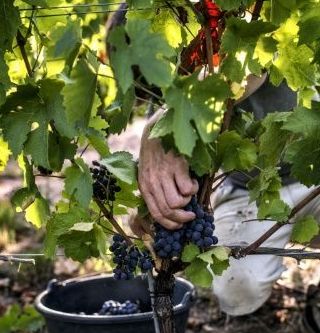French winemakers hunt for climate change-resistant grape
Amid the bustle of a busy harvest in France’s famed Beaujolais wine-making region, a quiet effort is underway to counter one of the industry’s biggest potential threats: climate change. As seasonal pickers set up their tents and tractors cart away bulging crates of grapes, scientists scrutinise a plot of land set aside to cultivate experimental varieties of the fruit. Their aim is to see which types fared best during what has been an exceptionally dry year in France, which is expected to cut grape output by a quarter in this region known worldwide for its light-bodied wines like Brouilly, Morgon and Julienas.
The ones with yellow leaves, which are missing foliage at the base of the vine’s main stem, the ones with withered grapes, we don’t want them.
Jean-Michel Desperrier, of the Beaujolais winemakers’ research centre Sicarex
France’s mid-summer heatwave led to grapes in Beaujolais ripening more quickly and thus the harvest, which kicked off on August 24, started a full month earlier than two years ago. France’s national agriculture research institute has undertaken an effort called LACCAVE, which is studying the issue and exploring ways to adapt. Adaptation efforts in Beaujolais are focused on the region’s main grape, the purple-coloured Gamay variety. So winemakers are on the lookout for a Gamay that can stand up the alternating periods of dryness and downpour while still producing enough perfectly sweet grapes.
It’s not whether there will still be vineyards in France in 2050. The real concern is knowing if we will be able to make wine with the same characteristics and avoid changing variety and the location of vineyards.
Herve Quenol, director of research at France’s National Centre for Scientific Research

Science climate change